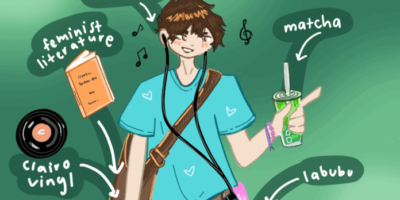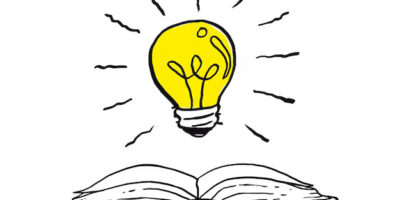In part one of this discussion, we covered some of the major problems with the high school system in Ontario and some of the issues that students in that system face. Before reading this part, it is highly recommended that you read through the article in the previous issue as there will be multiple references we are going to discuss in this article.
As mentioned previously, the key problems facing the current high school system is its inability to adequately direct students to a correct post-secondary path while preparing them for post-secondary education. The first major fix is a restructure of math and science by removing redundancies and adjusting pre-requisites. So let’s start with math as that is the core of the changes we will be making.
In the “new” system, grade nine will remain virtually untouched and instead students will be split into four different streams (Advanced, Academic, Applied and Consumer) depending on their grade in that course. Exceptional students would be given the opportunity to enter into the “Advanced” stream and students that have extreme trouble with math would be able to enter the “Consumer” stream. The main difference between the Advanced and Academic streams is the rate and breadth at which content would be covered. Advanced would follow a curriculum similar to that of the Advanced Placement and Academic would follow a curriculum similar to the current curriculum. Consumer math would provide the basic math (specifically statistics, basic algebra, etc.) that anyone would need to function in the workplace, while Applied would lead into College oriented math courses.
Moving on to specific course changes, Advanced Functions and Functions would be merged into the grade 11 Academic and Advanced versions of math, removing all the redundancies between the two courses. Calculus and Vectors would be split into two courses called Calculus and Algebra. Calculus would focus on limits, derivatives (implicit, related rates etc.), partial fractions, and applications of derivatives (physics, chemistry, optimization, etc.). The Advanced versions of Calculus would cover integrals, with the concept of a function introduced in grade 10. The Algebra course would focus on basic concepts in Linear Algebra such as vectors, matrices and matrix/vector operations (dot/cross-product, multiplication, and addition). The Advanced version of Algebra would also give a basic introduction into discrete mathematics with basic proof concepts outlined. The one course that would not be modified would be Data Management as it already serves its purpose as a basic statistics course.
In science there would be fewer changes except with pre-requisites and the implementation of Advanced versions of each courses in grade 11 and 12 that would cover material in greater depth. As well, Advanced Physics would have a greater focus on calculus in all concepts covered. Which brings us to the next change; grade 12 physics has a new pre/co-requisite in grade 12: Calculus. Almost all concepts in Physics were originally derived with calculus and it is silly that they are not taught with that in mind.
Now, as a number of people have mentioned to me, there are some inherent problems with implementing this system across the province due to funding, number of students and availability of teachers to cover these topics. These are all suggested changes that may need a drastic overhaul of the current system from the foundation up and it is understandable that they may be difficult to implement right now. However, there is one controversial step that can remedy some of these problems; abolishing the Catholic school system.
This is probably the most drastic and difficult change to implement because any time it is mentioned in an election platform that party generally is defeated (PCs in 2007). By taking two systems and merging them into one large system, you remove layers of bureaucracy, can merge smaller high schools into larger ones increasing course offerings, and remove the religious inequality in the current system. To take this one step further, doing a full review of all support staff for schools (analysts, bureaucrats, etc.) and removing costly unnecessary programs such as all-day kindergarten and extremely small class sizes can all redirect money to where it is actually needed; the students.
In the current system, students are supposedly the focus with the “no child left behind” policy that tries to get as many students pass as possible. This policy is one of the reasons we have ended up in our current situation with math and science. Let’s take a student, Jimmy, who is struggling in grade 10 Academic math after getting a 60 in grade 9. Eventually, Jimmy becomes frustrated and, as a result, stops going to class and and passes with a 50. If Jimmy fails, it isn’t his fault because he stopped doing work; it is the teacher’s. Now, you may ask, “how is this possible?” In the current system, the teacher has to write up a detailed report on why they failed the student, even if they had done everything in their power to try to help the student. Clearly, there is a problem here. Jimmy should have been in the Applied stream, but, at the same time, Jimmy should not have passed the course. High school is supposed to prepare students for the real world but how can it do that by coddling everyone? Failure is supposed to be the medium for finding what you excel or don’t excel at.
In this article, we’ve covered some possible fixes to the high school system in Ontario. Course changes, merging school systems, eliminating redundancies and abolishing the “no child left behind” policy all can contribute to the drastic reforms and improvements required. Many of these are not feasible without drastic changes in how the current system works and, in some cases, many of these suggestions may be next to impossible, but any improvement is better than none.




Nananaeveryday
Keeep dreamin' Bahd
Franz
Thank you for writing this two part piece. I suggest you should go to the Ministry of Education about this. I completely agree with your analysis. One problem is the lack of talented high school math and science teachers in the province that could implement this curriculum. Actually my computer science grade 12 class was cancelled during my high school year because of lack of a qualified teacher and student demand. I Took an AP physics class in high school but the class was split into academic and AP physics. How can you really learn if your teacher is teaching two classes at the same time? Your solution of merging the Catholic with Public schools could help in this. One example of a curriculum like you are trying to implement is happening in few high schools. Only one school comes to mind which is The TOPS program at Marc Garneau collegiate institute in Toronto, where students are actually taught advanced physics and math properly. 500 students apply to attend this program but only 60 get in every year. For most of the students that graduated from that program, all said that first basic courses in math and sciences in university were a joke. Yes the students are talented but the teachers are also very talented. Lastly, I think the problem also stems from poor preparation in elementary schools. Generally, there are too few talented math and science specialist teachers in this province that could properly teach the material. The current high school math and science curriculum is really doing a disservice to all students!
essay service
There are just many students who doesn’t really care about high school and sometimes, they just take schooling for granted which instantly result into failing grades. If they put some important in their studies, they will surely graduate with flying colors and cannot feel any difficulties along the way.
Chloe Young
I like the how the writer was able to see the current educational system in a different point of view. I agree when he says that “high school is supposed to prepare the students for the real world”… and that failure is something that should be taken pro-actively, helping them “find what they excel or don’t excel at.” The article should be a challenge to the people behind our educational system. Well-written.
Chloe Young
agree